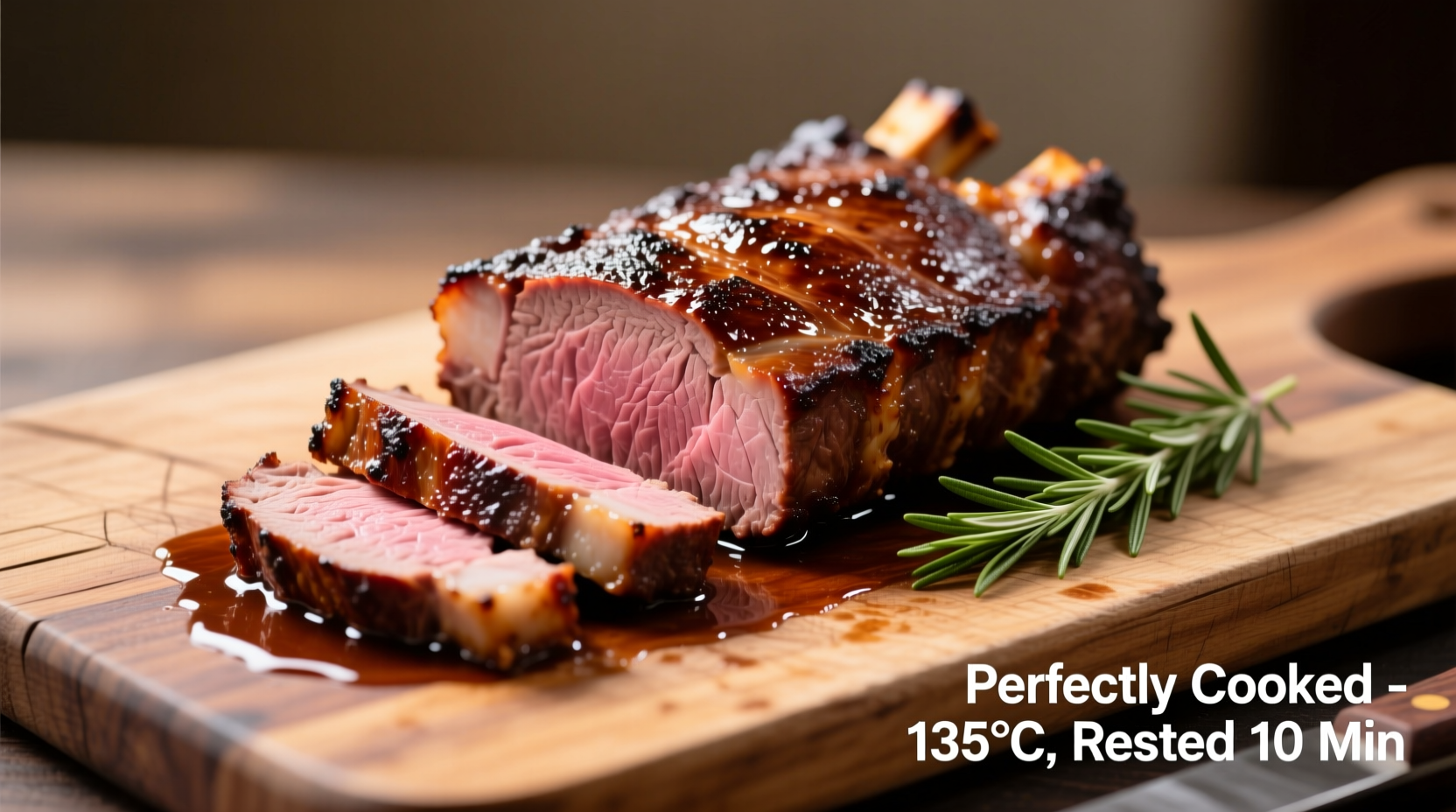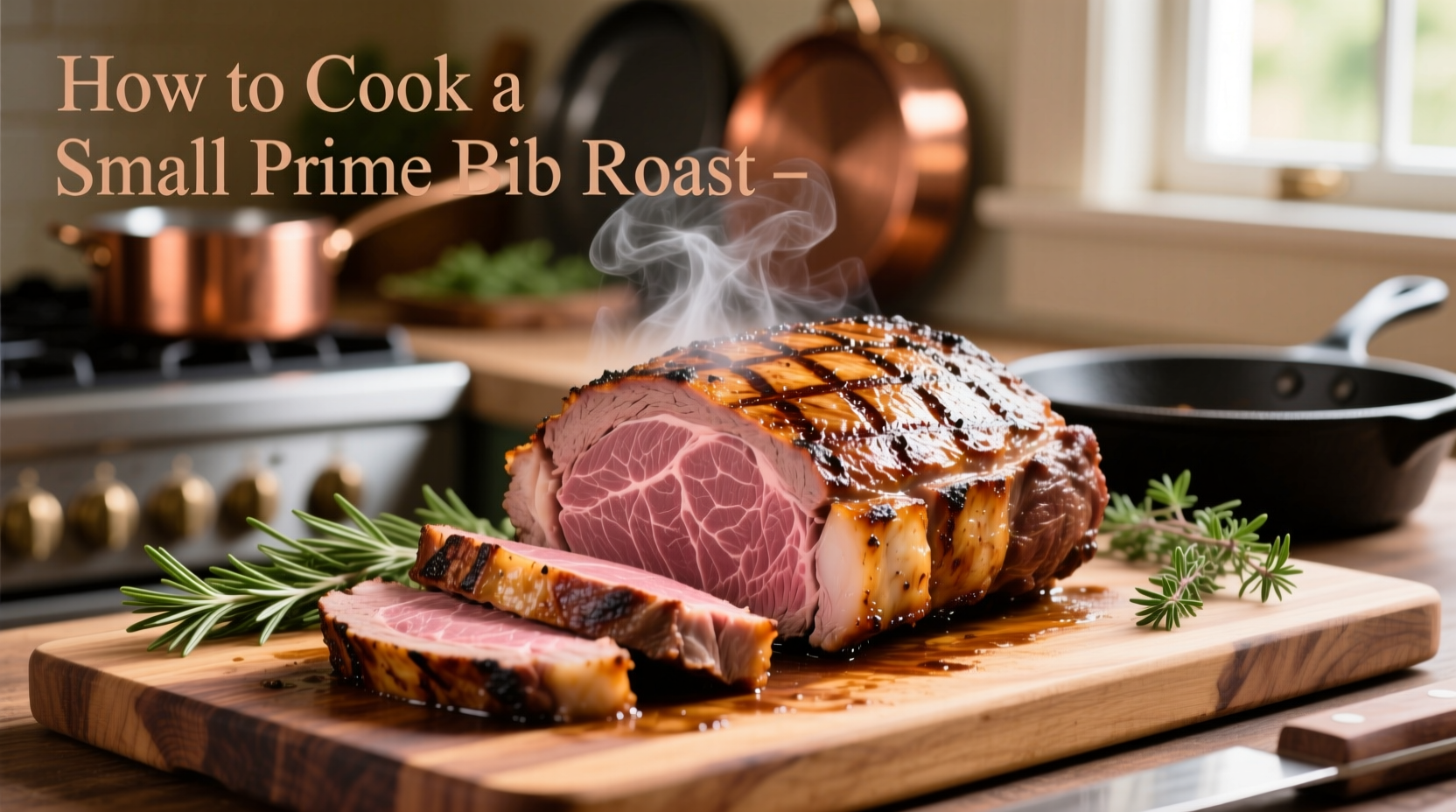The Ultimate Guide to Cooking Small Prime Rib Roast Like a Pro
Nothing impresses guests quite like a perfectly cooked prime rib roast. But when working with a smaller cut (3-5 pounds), standard cooking methods often lead to overcooked, dry meat. This guide reveals the precise technique professional chefs use to achieve restaurant-quality results with your small prime rib roast—crisp exterior, rosy pink interior, and maximum flavor retention.
Why Small Prime Rib Requires Special Attention
Small prime rib roasts (typically 1-2 ribs) behave differently than larger cuts. Their smaller mass means they cook faster and are more susceptible to overcooking. According to the USDA Food Safety and Inspection Service, the ideal internal temperature for medium-rare prime rib is 130-135°F after resting, but reaching this target requires careful monitoring with smaller cuts that can jump 10-15°F during resting.
Essential Tools You'll Need
- Instant-read meat thermometer (critical for small roasts)
- Rimmed baking sheet or roasting pan
- V-rack for proper air circulation
- Butcher's twine for tying
- Heavy-duty aluminum foil
Selecting the Perfect Small Prime Rib
Look for a 3-5 pound roast with:
- Bright red meat with fine marbling throughout
- Thick layer of creamy white fat (avoid yellowed fat)
- At least 1" of fat cap remaining
- "USDA Prime" or "Choice" grade for best results
| Prime Rib Size | Cooking Time (325°F) | Resting Time | Servings |
|---|---|---|---|
| 3 lbs (1-2 ribs) | 45-60 minutes | 20-30 minutes | 2-3 people |
| 4 lbs (2 ribs) | 60-75 minutes | 25-35 minutes | 3-4 people |
| 5 lbs (2-3 ribs) | 75-90 minutes | 30-40 minutes | 4-5 people |
Step-by-Step Cooking Process
Preparation (24 Hours Before)
Remove packaging and place roast on a wire rack over a plate in the refrigerator, uncovered. This dry-brining process enhances crust formation and flavor concentration. Season generously with coarse salt (1 tablespoon per 5 pounds) to draw out moisture and create the perfect sear surface.
Seasoning (1-2 Hours Before Cooking)
Bring roast to room temperature. Pat completely dry with paper towels. Mix 2 tablespoons olive oil with 3 minced garlic cloves, 1 tablespoon fresh rosemary, and 1 tablespoon fresh thyme. Rub thoroughly over entire surface, including fat cap. Tie any loose ends with butcher's twine.
The Two-Stage Cooking Method
- High-heat sear: Preheat oven to 450°F. Place roast fat-side up on V-rack in roasting pan. Roast for 15 minutes to develop crust.
- Controlled roast: Reduce oven to 325°F. Continue roasting until internal temperature reaches 115°F for rare or 120°F for medium-rare (check thermometer in thickest part, avoiding bone).
- Precision timing: Small roasts cook at approximately 15-20 minutes per pound after the initial sear. Rely primarily on temperature, not time.

Resting and Carving
Transfer roast to cutting board, tent loosely with foil, and rest for 20-30 minutes (critical for small roasts). During this time, internal temperature will rise 5-10°F to perfect medium-rare. To carve, slice between ribs, then cut each rib portion into ½-inch slices against the grain.
Avoid These Common Small Roast Mistakes
- Not using a thermometer: Small roasts can go from perfect to overcooked in 5-7 minutes
- Skipping the dry-brine: Essential for proper crust formation on smaller cuts
- Cutting too soon: Resting time is non-negotiable for juicy results
- Overcrowding the pan: Prevents proper air circulation needed for even cooking
When This Method Works Best (And When to Adjust)
This high-sear then low-roast technique works perfectly for standard oven cooking. However, if using a convection oven, reduce temperature by 25°F. For very small roasts (under 3 lbs), consider the reverse sear method: cook at 250°F until 110°F internally, then sear in a 500°F oven for 8-10 minutes. This approach provides even more precise temperature control for extremely small cuts.
Serving Suggestions for Small Gatherings
A small prime rib roast pairs beautifully with simple sides that won't overwhelm its rich flavor. Consider horseradish cream sauce, roasted garlic mashed potatoes, and sautéed green beans with almonds. For wine pairings, a bold Cabernet Sauvignon or Pinot Noir complements the beef's richness without overpowering it.
Historical Context: How Prime Rib Cooking Has Evolved
Prime rib's cooking methods have evolved significantly since the 1950s when it became popular in American steakhouses. Originally cooked entirely at high temperatures, modern techniques emphasize lower, slower cooking for more even results. The USDA's temperature guidelines have also shifted—where medium was once the standard, today's chefs and home cooks prefer rarer preparations to showcase the meat's quality. This evolution reflects both improved meat quality and greater understanding of meat science.











 浙公网安备
33010002000092号
浙公网安备
33010002000092号 浙B2-20120091-4
浙B2-20120091-4